

Imports & Exports. On February 19, 2014, President Obama signed an Executive Order streamlining the import and export process for America's businesses.
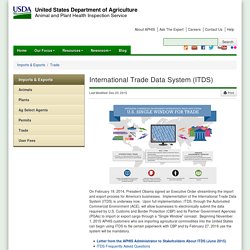
Implementation of the International Trade Data System (ITDS) is underway now. Upon full implementation, ITDS, through the Automated Commercial Environment (ACE), will allow businesses to electronically submit the data required by U.S. Customs and Border Protection (CBP) and its Partner Government Agencies (PGAs) to import or export cargo through a "Single Window" concept. Beginning November 1, 2015 APHIS customers who are importing agricultural commodities into the United States can begin using ITDS to file certain paperwork with CBP and by February 27, 2016 use the system will be mandatory. APHIS Webinar on ACE Planning and Piloting APHIS and CBP hosted a stakeholder Webinar on December 9, 2015 focused on ACE planning and piloting. APHIS’ Implementation Guidelines (PGA Message Sets) RegulatedPestList.pdf. Noxious Weeds Program Risk Assessments. PPQ conducts weed risk assessments (WRA) as part of its process for safeguarding U.S. agriculture and natural resources from weeds and invasive plants.
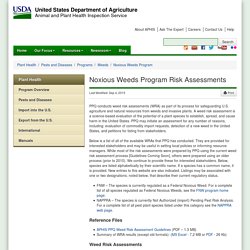
A weed risk assessment is a science-based evaluation of the potential of a plant species to establish, spread, and cause harm in the United States. PPQ may initiate an assessment for any number of reasons, including: evaluation of commodity import requests, detection of a new weed in the United States, and petitions for listing from stakeholders. Below is a list of all of the available WRAs that PPQ has conducted. They are provided for interested stakeholders and may be useful in setting local policies or informing resource managers. While most of the risk assessments were prepared by PPQ using the current weed risk assessment process [Guidelines Coming Soon], others were prepared using an older process (prior to 2010).
FNW – The species is currently regulated as a Federal Noxious Weed. Reference Files Weed Risk Assessments - Or - Plant Health. <div class="lotusMessage2" role="alert" wairole="alert"><img class="lotusIcon lotusIconMsgError" src="icons/blank.gif" alt="Error" /><span class="lotusAltText">Error:</span><div class="lotusMessageBody">Javascript is disabled in this browser.
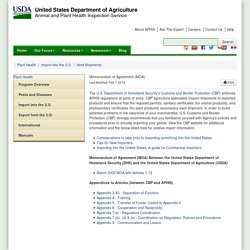
This page requires Javascript. Modify your browser's settings to allow Javascript to execute. Plant Health. Confessions of a Part-Time Audiophile. Plant Health. <div class="lotusMessage2" role="alert" wairole="alert"><img class="lotusIcon lotusIconMsgError" src="icons/blank.gif" alt="Error" /><span class="lotusAltText">Error:</span><div class="lotusMessageBody">Javascript is disabled in this browser.
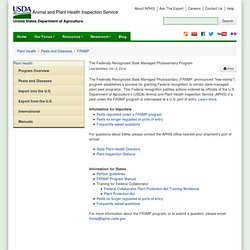
This page requires Javascript. Modify your browser's settings to allow Javascript to execute. See your browser's documentation for specific instructions. </div></div> Web Content Viewer (JSR 286) Plant Health The Federally Recognized State Managed Phytosanitary Program Last Modified: Oct 14, 2014 Print The Federally Recognized State Managed Phytosanitary (FRSMP, pronounced “free-stamp”) program establishes a process for granting Federal recognition to certain state-managed plant pest programs.
Information for Importers For questions about EANs, please contact the APHIS office nearest your shipment's port of arrival: Information for States For more information about the FRSMP program, or to submit a question, please email: frsmp@aphis.usda.gov. Headquarters U.S. Army Corps of Engineers > Missions > Environmental > Invasive Species Management. Florida agencies work together Across Florida and throughout the nation, invasive species bring with them high ecological and economic costs.
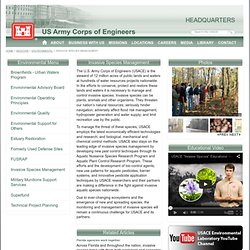
It’s far too big a problem for just one agency or group. The Florida Invasive Species Partnership (FISP) is a collaborative group of federal, state and local agencies and non-government organizations, all with a stake in managing non-native species in Florida. FISP facilitates the formation of Cooperative Invasive Species Management Areas (CISMAs), alliances of stakeholders addressing regional invasive species management. Some of the concerns they try to address include prevention, education/awareness, early detection, rapid response, monitoring and integrated pest management. Published: 7/30/2014 Nipping invasive air potato 'in the spud' It’s almost like a scene from a science fiction movie.
Slowing the spread of new invasives. EPA Vessel General Permit. Introduction EPA currently regulates discharges incidental to the normal operation of commercial vessels greater than 79 feet in length and operating as a means of transportation primarily through the Vessel General Permit (VGP).
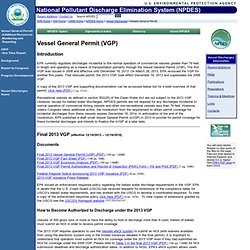
The first VGP was issued in 2008 and effective until December 19, 2013. On March 28, 2013, EPA re-issued the VGP for another five years. That reissued permit, the 2013 VGP, took effect December 19, 2013 and supersedes the 2008 VGP. USDA Forest Service Invasive Species Program. Welcome to the USDA Forest Service Invasive Species Program website, a portal to Forest Service invasive species information and related management and research activities across the agency and with our many partners.

The goal of the USDA Forest Service invasive species program is to reduce, minimize, or eliminate the potential for introduction, establishment, spread, and impact of invasive species across all landscapes and ownerships. The Invasive Species Program integrates many divisions of the agency. The Chief of the USDA Forest Service has identified invasive species as one of the four critical threats to our Nation’s ecosystems. In response to this national threat, we have evaluated the role of the Forest Service as a leading forest research, forest health, and Federal resource management agency.
NOAA Invasive Species. Invasive species are considered to be one of the greatest threats to marine and coastal biodiversity world-wide, second only to habitat loss.
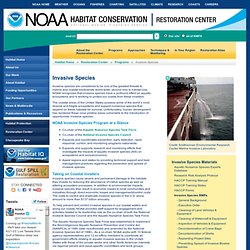
NOAA recognizes that invasive species have a profound effect on aquatic ecosystems and is working to protect our coasts from these invaders. The coastal areas of the United States possess some of the world’s most diverse and fragile ecosystems and support numerous species that depend on these habitats for survival. EPA Invasive Species.
You will need Adobe Reader to view some of the files on this page.
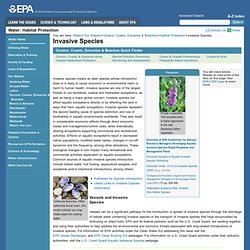
See EPA's PDF page to learn more. Invasive species means an alien species whose introduction does or is likely to cause economic or environmental harm or harm to human health. Invasive species are one of the largest threats to our terrestrial, coastal and freshwater ecosystems, as well as being a major global concern. USCG Ballast Water Management. Ballast water discharged from ships is one of the pathways for the introduction and spread of aquatic nuisance species (ANS) .
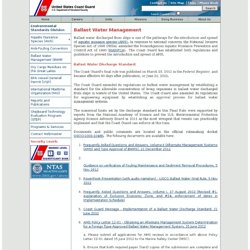
In response to national concerns, the National Invasive Species Act of 1996 (NISA) amended the Nonindigenous Aquatic Nuisance Prevention and Control Act of 1990 ( NANPCA ). The Coast Guard has established both regulations and guidelines to prevent the introduction and spread of ANS. US FWS Invasive Species. An invasive species is one that is not native to an ecosystem and which causes, or is likely to cause, economic or environmental harm or harm to human health. It is important to note that when we talk about a species being invasive, we are talking about environmental boundaries, not political ones.
In addition to the many invasive species from outside the U.S., there are many species from within the U.S. that are invasive in other parts of the country. The U.S. FWS Injurious Wildlife Prevention. Introduction Trade in live, nonnative organisms is a multi-billion dollar industry that supports components of the pet, food, bait, aquaculture, zoo, sportfishing, and horticulture trades. Only a small fraction of those species escape from captivity, survive, and establish populations in the environment, and then disperse and cause harm. However, those that do collectively cost society billions of dollars each year in the United States alone in lost crops, livestock, timber, fisheries, and other resources, as well as diseases and damage to property.
[We should note that invasive species come from other sources besides the commerce-in-live-organism industries—these are related to transportation, such as “hitchhiking” species in ships’ ballast water and in packing materials.